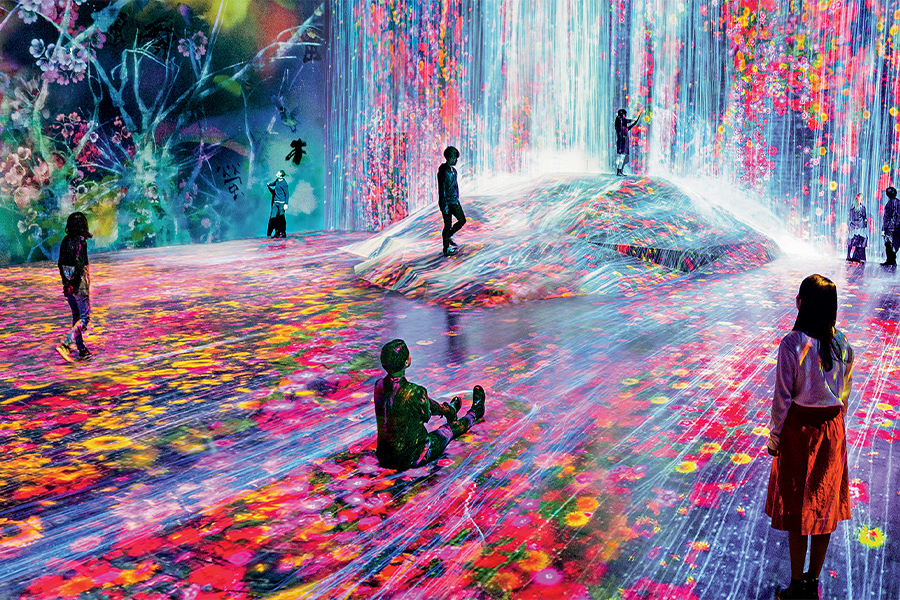The arts aren’t just entertainment: they’re essential to our lives.
That’s the core message of Your Brain On Art: a life-altering journey through the science of neuroaesthetics by Susan Magsamen, Founder and Director, International Arts + Mind Lab, Center for Applied Neuroaesthetics, John Hopkins University School of Medicine, and Ivy Ross, VP of Design for Hardware Product Area, Google.
In it, they offer proof for how our brains and bodies transform when we participate in the arts – and how this knowledge can improve our health, enable us to flourish, and build stronger communities.
For example, did you know that…
- Engaging in an art project for as little as 45 minutes reduces the stress hormone cortisol, no matter your skill level.
- Just one art experience per month can extend your life by ten years.
- Playing music builds cognitive skills and enhances learning, and the vibrations of a tuning fork create sound waves to counteract stress.
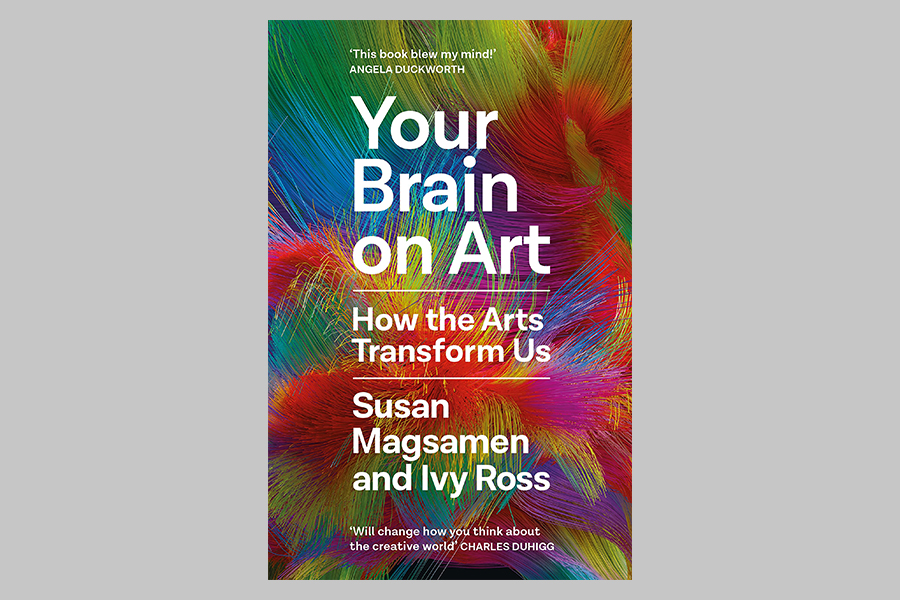
Virtual reality can provide cutting-edge therapeutic benefits, and interactive exhibits that dissolve the boundaries between art and viewers engage all of our senses and strengthen memory.
Doctors have even begun prescribing museum visits to address loneliness, dementia, and many other physical and mental health concerns.
In other words, we’re on the verge of a cultural shift in which the arts – and experiences at large! – can deliver potent, accessible, and proven solutions for the wellbeing of everyone.
Here, Magsamen and Ross share information and insights about the role of arts and aesthetic experiences to transform us. We explore the science of the arts and the power of our senses to evoke salient, memorable moments, and share several examples that illustrate the impact of the arts and aesthetics.
The Shift From Productivity Towards Transformation
We are standing on the verge of a cultural shift in which the arts can deliver potent, accessible, proven health benefits to millions of people.
We’ve been optimising for productivity since the Industrial Revolution, pushing the arts aside or making them a luxury or “nice to have”. We thought that focusing on productivity would make us happy: but we’re not. That experiment has failed.
“Mental health issues are now surpassing physical health issues. What we’re seeking more than ever on both an individual and societal level is transformation. Experience designers are one of the keys to turning the tide and creating a path forward.”
Ivy Ross
The designers and makers of deep, rich experiences offer the potential to bring us back to our evolutionary foundation: to inspire us, move us, heal us and connect us. We’re at an exciting time when science and the arts are coming together to show us that we are, in fact, wired for art.
The Role Of The Arts In Humanity Throughout History

As part of the research for Your Brain On Art, Magsamen and Ross interviewed indigenous peoples from around the world about their communities. They learned that there are still over 500 active tribes.
Many do not have a separate word for “art”, because it’s how they live their daily lives. They create, sing, dance, tell stories, and draw images.
For example, a Columbian cave rock painting represents the experiences of daily life. A piece of art found by the geologist David Zhang in Tibet and believed to be 226,000 years old is a symbolic representation of our hands and feet: the very same tools we still use to create our world today.
“We humans have been both the maker and the beholder since the beginning of time. And the arts and aesthetic experiences, in all their forms, have been used for many purposes – including self-expression, communication, collaboration, reflection, healing and flourishing. These experiences are the gateway to transformation – and they are our birthright.”
Susan Magsamen
The Incredible Power Of The Senses

In researching the book, the pair spoke to E.O. Wilson about the importance of creative experience in human evolution. He asked them to imagine what it might have been like to be early humans: what were they experiencing and feeling?
If you think about what you’re feeling now, this information is modulated through the senses.
Touch: we have 4 million receptors in our skin that take in information. Each of the soles of our feet has over 200,000 receptors, and each fingertip has over 300,000. Our lips are 100 times more sensitive than our fingertips, with over a million different nerve endings. Touch is one of the most powerful cognitive communication vehicles and one of the first sensory systems to evolve.
Scent: this is the oldest human evolutionary sense. Your nose can detect 1 trillion odours, and its receptors renew every 30-60 days.
Sight: our eyes work in a similar way to a camera, with images converted into electrical signals. We process 36,000 pieces of information per hour, equating to over 24 million images over the course of your life.
Sound: we register sounds in 3 milliseconds. The way sound works in the body is fascinating: the sounds that we hear are caused by the motion of our eardrums, which causes fluid in your inner ear to move. The fluid inside the inner ear bends hairs on the cells, which convert to nerve impulses that travel to your brain. These impulses move through the brain via neural networks and evoke strong emotions, and memories, altering moods and behaviours instantly.
Different tempos, languages and sound levels affect your emotions, mental activities and physical reactions. Researchers have learned how brain waves correlate to musical beats per minute. Our brains will entrain to the beat of the music, putting us into a variety of states including alpha waves for relaxation and delta for sleep
Good Vibrations & The Cymatics Of Sound
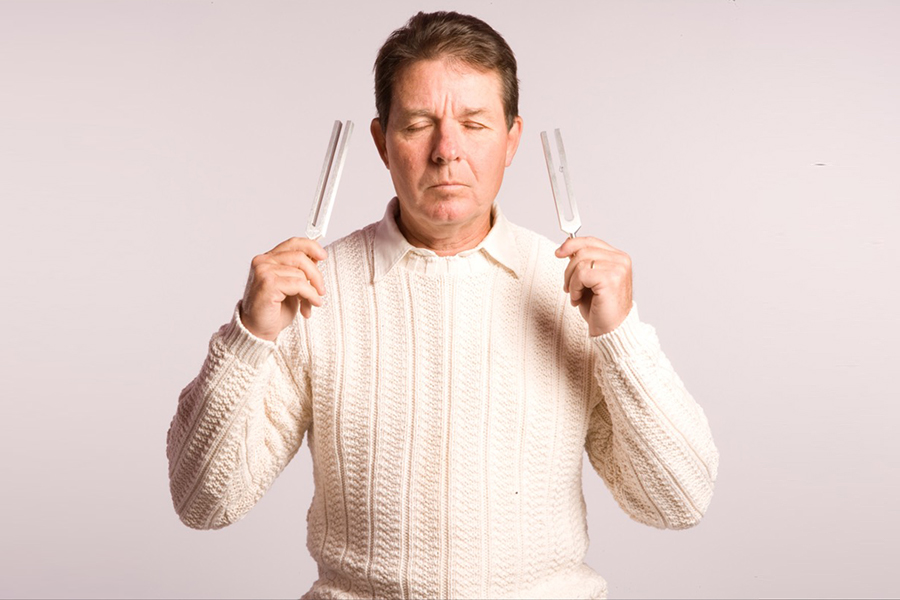
Sound becomes an excellent tool to help regulate stress, in that it can work on an unconscious level. The frequency of sound instantly taps into what lies underneath conscious recognition, literally changing the vibrations in your body.
Sound vibration has the capacity to return the body to homeostasis and out of a fight-flight-freeze reaction.
“I have been known to use tuning forks in the middle of a meeting to tap into a co-worker’s physiology to help disrupt a stress cycle. Emotions are energy in motion, and each has its own frequency.”
Ivy Ross
There’s a scientific theory being studied now about how sound frequency increases our body’s natural production of nitric oxide, which would explain how sound alleviates stress. Nitric oxide enhances cell vitality and vascular flow, and may account for the relaxation effect in the body. Several small studies have shown that sound frequencies from things like tuning forks and even humming cause nitric oxide to be released in our cells.
There’s a science called cymatics, which is making sound visible, that was started back in the 50s. Magsamen and Ross’s actual voices were put through a scientific instrument called a cymascope that John Reid developed in the early 2000s. It literally imprints sonic vibration from voices on the surface of ultra-pure water, while a camera films the patterns in the water. By making sound visible, along with the knowledge that our bodies are made up of 60% water, we can now understand the impact sound has on us.
In the book The Hidden Messages in Water, Japanese scientist Masaru Emoto had participants speak words into water and photographed the structure of the water based on the words said. He saw the patterns change: some of them were ugly and some beautiful, based on sound.
“Be careful with your words, because they matter!”
Ivy Ross
The Effect Of Sensory Perception On Our Bodies
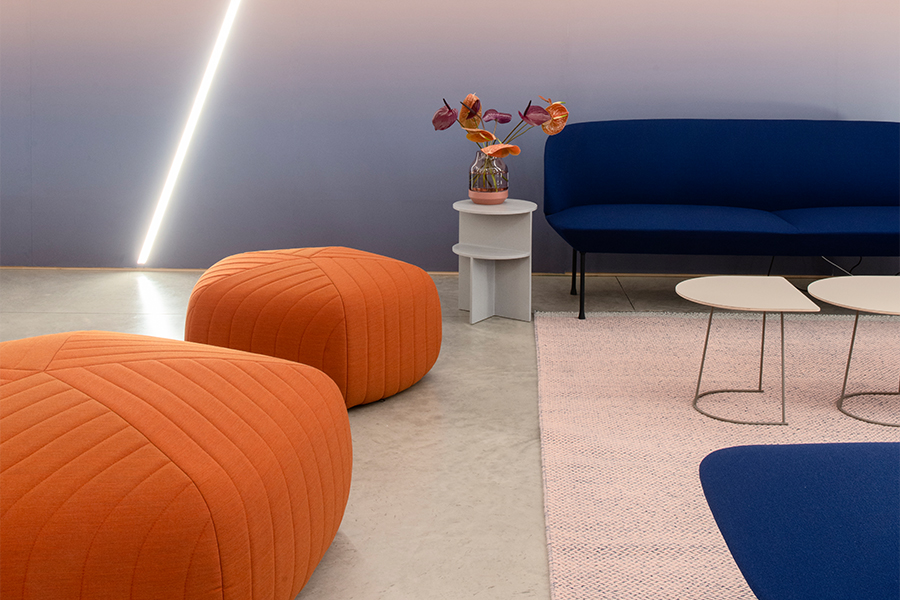
“Most of us think of ourselves as thinking creatures that feel, but we are actually feeling creatures that think.”
Jill Bolte Taylor
We now know that we experience over 34,000 different feelings. In 2019, Magsamen and Ross had the opportunity to put these neuroaesthetic principles into action in real time to illustrate the effects of sensory perceptions on our bodies, in an exhibit called “A Space for Being”.
This example of enriched environments, default mode network and the aesthetic triad came to life through a collaboration with Google, Magsamen’s lab at John Hopkins and the architect Suchi Ready.
Participants walked into a space where they were fitted with a custom band containing sensors that were continuously taking in biological information. They walked through three different rooms, where they were invited to to touch, smell, listen, and explore for five minutes in each without talking, taking photos or using their devices.
Each of the three rooms were designed with a different set of neuroaesthetic principles that affected the choice of colours, textures, materials, shapes, music, scent and lighting. One room had a primitive feel, for example, using art featuring wool that had been hand-dyed on a farm.
At the end of the experience, guests had their bands removed by a “band-tender” and their data was downloaded for them only. They received a personalised data visualisation revealing in which space their bodies felt most “at ease” or relaxed. This conclusion was based on their real-time biological feedback being fed into the algorithm that Magsamen and Ross developed.
People wanted to know which room was the “right” answer – but there wasn’t one! One woman was uncomfortable with the whole exhibit, as she felt she didn’t deserve any of these rooms as she grew up poor. Her physiology showed that her body loved the most playful room, as it signalled to her brain that she was happiest when playing.
So for our body to feel the least stressed, what are the factors? Surprisingly, in over 50% of people the room they liked best was not the one in which their body felt most at ease. The experiment was a success, as they were able to show that what we think is not necessary what we feel – and that our body is feeling all the time through our senses. We are embodied beings.
The Age Of Neuroaesthetics Has Arrived
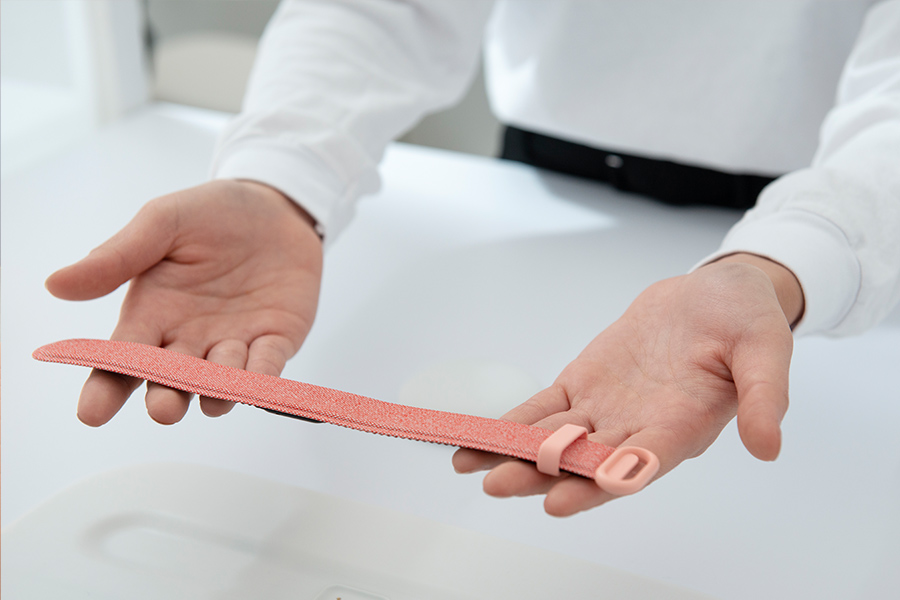
The exhibition was the first time the public experienced the science of neuroaesthetics, or neuroarts, in action.
This is an emerging interdisciplinary field that has exploded over the last 20 years, because technology has enabled us to get inside our heads and study the extraordinary ways the arts impact us.
Neuroarts is the study of how the arts and aesthetics measurably change your brain and body, and how this knowledge can be translated into practices that advance health and wellbeing.
These experiences alter a complex physiological network of interconnected neurological and biological systems. We now know that we are literally wired for art.
These systems connect and change happens through a process called neuroplasticity. Each of us are born with 100 billion neurons that connect at a synaptic level. You have quadrillions of connections in your brain, creating endless neuropathways. These pathways underlie your body movements, emotions, memory: basically everything you do.
When you are making a memory or learning something, you are actually making some synaptic connections stronger and some weaker through the saliency of your experiences. In this way, you are actually sculpting a new pathway that was not there before and encoding a new memory.
A great example of neuroplasticity can be found in the spaces and places we inhabit. In the 1960s, neuroscientist Marion Diamond designed an experiment that proved that enriched environments increased the thickness of the cerebral cortex of the brain by 6%. This was the first time anyone had ever seen a structural change in an animal’s brain based on different kinds of environmental experiences.
Studies have since been duplicated with people using non-invasive technology, with similar results. The implications for creating healthier and more creative environments for all of us are profound.
These structural changes in the brain are possible because you bring the world in through your senses. The science of the senses is fascinating and beautifully illustrates the precision and power of these human capacities.
The Aesthetic Mindset & Saliency Network
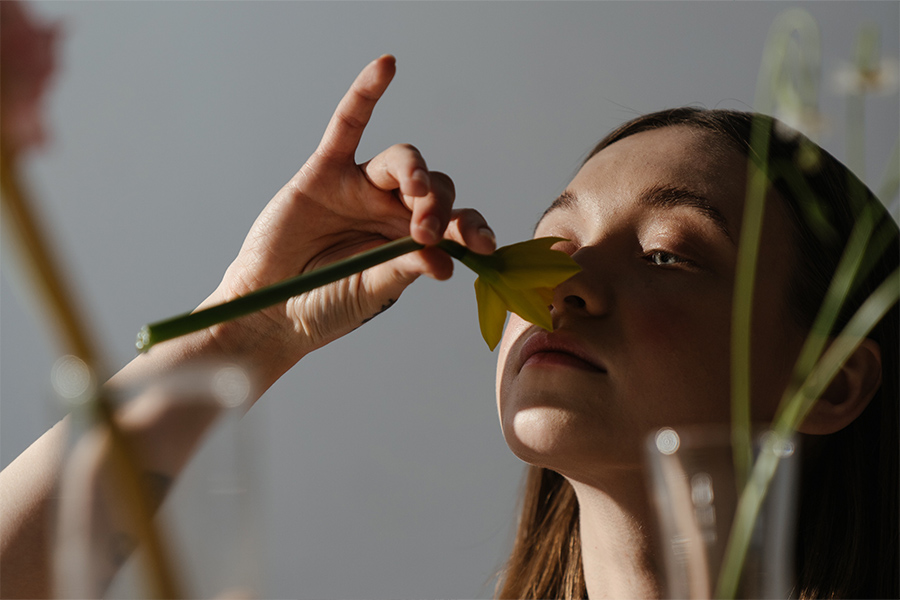
Knowing how your senses work is key to understanding the transformative power of the arts. Smell, taste, vision, hearing and touch produce biological reactions of staggering speeds, integrating millions of sensory signals.
As shown in A Space for Being, your entire body, not just your brain, takes in the outside world – yet much of this sits outside of your awareness. We’re only conscious of about five percent of our mental activity. The rest of your experience – physically, emotionally and sensorially – lives below what you are actually thinking. The salient information that enters your body has unlimited capacity to change your perspective, mood, outlook and more.
Magsamen and Ross call this your “aesthetic mindset”. It represents four basic components: curiosity, sensory awareness, interest in making or beholding, and playful exploration.
Researchers are discovering that through highly salient experiences like the arts and aesthetics, the quadrillions of new synapses that form in your brain create a repository of stored knowledge that are as unique as your fingerprints. No one else, not a single person, has your exact brain.
But you couldn’t possibly pay attention to all of the sensory stimuli coming into your body, or to the many emotions and thoughts that emerge. Your brain filters out the inputs that seem irrelevant and focuses its attention on what it believes to be pertinent, and prunes or deletes what is no longer relevant. This is because what is salient to you is important to you either for practical or emotional reasons. It stands out.
There are several regions in the brain that help to determine what is salient. These areas have been identified as the saliency network. This network moderates switching between the internal and external processing of the brain’s two main control networks, called the Central Executive Network and the Default Mode Network.
What You Bring Into An Experience Affects What You Get Out

The Default Mode Network is where the neurological basis of “the self” is housed. It’s your brain’s meaning-making machine that connects the dots, finds patterns and makes sense of the world.
It’s also where you decide what you like and don’t like: what is and isn’t beautiful to you.
The Default Mode Network processes incoming sensory information when you are quiet. It goes to work when new stimuli are not entering your system. In other words, we need to hit pause to process our world. If you ever wondered where in your head you daydream, mind-wander and think to yourself, this is the place. It’s one of the reasons you are what you experience.
“My beauty is not your beauty – it’s a complex series of emotions that are going to be different because of life experiences. When you design a space to try and elicit powerful emotional responses, you have to understand that people will be coming from a complex place.
There’s a valence scale of 1-9 that looks at emotions like joy or sadness. When listening to opera music, people didn’t agree on what was joyful or sad, despite hearing the same music – but the emotional valence was similar.
We want to inhale more of ourselves, not a happy medium. The common denominator doesn’t work any more. There isn’t any one-size-fits-all, so just go for it!”
Ivy Ross
The Aesthetic Triad & Examples Of Salient Experiences

To take this one step further, neuroscientist Anjan Chatterjee and their colleagues developed a theoretical model called the Aesthetic Triad that helps to explain how and why we each perceive the world from our unique perch.
The triad has three components.
Knowledge Meaning: this includes where you come from and what you know.
Sensory-Motor: your physiological systems that are engaged.
Emotional Valuation: how we feel about something.
At the centre of these intersecting circles is where your unique aesthetic experiences or moments are achieved. The more salient these experiences, the greater the aesthetic experience.
We’re all craving these salient, aesthetic experiences whether we are conscious of it or not, as our brain and heart know that they are good for us. This is why we are starting to see so many immersive art experiences.
Chromasonic is a cultural impact enterprise, a collaborative studio and research lab made up of sound artists, musicians and multimedia and installation artists in Venice California. Its satellites are permanent: they are local neighbourhood sites built into existing architecture where participants can form a practice around supersensory Chromasonic experiences for improved wellbeing.
This full-body immersion in a curvilinear space appears boundless and infinite from within, transporting participants into a new awareness of perception and inspiring a radical state of presence in community with others. It fuses science with art in light and sound. The melding of sensory modalities blurs boundaries between physical and perceived realities, suspending participants in time and space.
Chromasonic installations are synesthetic experiences where participants see sound and hear light.
“We were so clear and present exiting the experience. It ignited our sensory system and forced us out of our cognitive mind.”
Ivy Ross
Many of the best examples of these experiences end up being a result of multidisciplinary collaborations, like French interior designer and furniture maker Pierre Yovanovitch and acclaimed director Vincent Huguet, who created a new stage set for the opera Rigoletto at a theatre in Switzerland.
His dramatic set design is composed of a central structure of three rotating walls, painted blue and red to evoke flower petals. These walls move along a 360-degree circular track, turning and shifting as the story line evolves. Every position creates an entirely new backdrop for the characters.
The combination of curves, which we know is evolutionarily important, along with colour, textures, movement, lighting and storytelling, heightens the experience of the opera physically and emotionally. Immersive and interactive exhibits like this dissolves the boundaries between art and viewers, engaging our senses and creating strong emotional reactions that enhance learning and memory.
And in the Living Paintings exhibition, Refik Anadol – who created the cover of Your Brain On Art – created an artwork based on datasets that reflect real-time neural activities in the visual cortex, culminating in a multisensory Neural AI Data Painting.
The Role Of Experiences In Amplifying The Impact Of Art
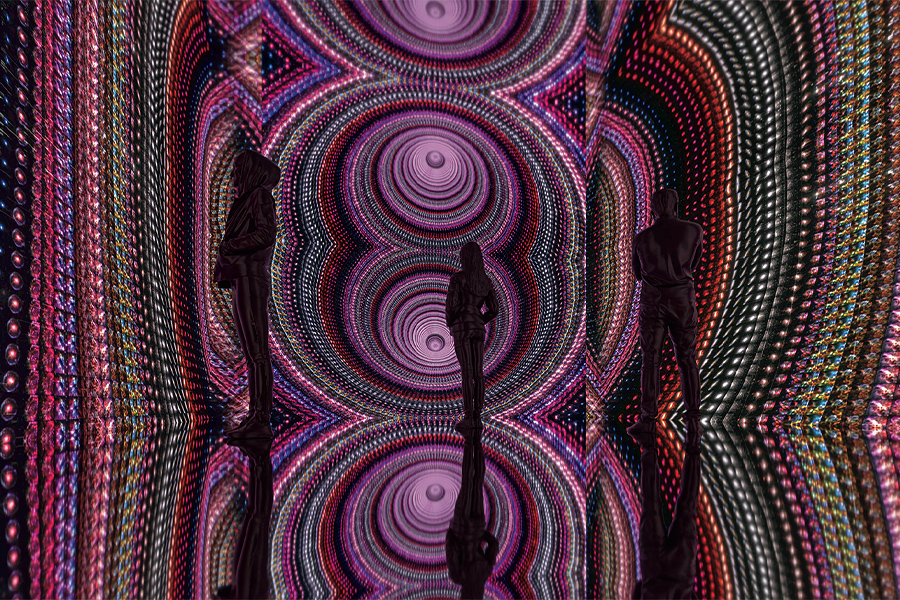
“Art is our own true global language. It speaks to our need to reveal, heal and transform. It transcends our ordinary lives and lets us imagine what’s possible.”
Richard Kamler
The World Bank says that “Without strong and diverse cultures economies can’t grow, inner healing, health and wellbeing suffer, and opportunities are lost.” We are ultra-social creatures who biologically evolved to belong to something greater than ourselves.
The success of our species comes down to this: art creates culture. Culture creates community. And community creates humanity. Storytelling, dancing, singing and so many other art forms are all part of our evolutionary DNA.
“You are on the cutting edge of this explosive field. You activate and enliven our senses. Your work changes people in immeasurable ways. Through this lens, we hope you will be inspired to use this information to elevate and amplify the great experiences you are already creating.”
Susan Magsamen
The science and power of the arts offers enormous opportunities to help us heal, learn and flourish as individuals and in community.
The WXO Take-Out
Just as the Industrial Revolution brought us to a point where we made great things but wanted them to be beautiful, now there’s an opportunity for experience designers to make them meaningful, too.
If you can design with salience in mind, you might be able to rewire someone’s brain so that they never see something in the same way again. Every 7 years you’re a new person – when you have experiences or put yourself in new situations, your brain is rewired.
So next time you’re designing an experience, ask yourself:
- Share a time you had a powerful salient experience through the arts and aesthetics. How do you translate this new knowledge into practice?
- How do you use sensory information to elicit emotions?
- How do you know you have achieved the impact of your experience? Could you know more? How could you collect this data/information?
To see the full line-up for the WXO Campfires Season 6, click here.
To apply to join the WXO and attend future Campfires, click here.

